June 20, 2025 | 10:37 GMT +7
June 20, 2025 | 10:37 GMT +7
Hotline: 0913.378.918
June 20, 2025 | 10:37 GMT +7
Hotline: 0913.378.918
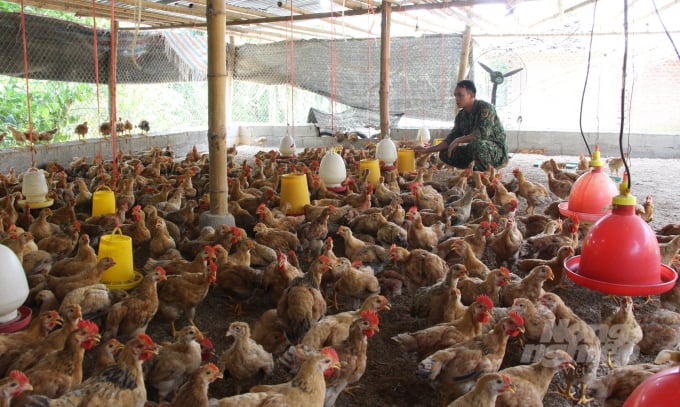
When live hog prices are low, Cao Bang farmers shift to raising poultry. Photo: Cong Hai.
Cao Bang province has issued many policies to ptomote the development of livestock and poultry raising.
Its agriculture and rural development sector also promotes support and guidance for farmers in breeding techniques and disease prevention for livestock herds. On the basis of specific conditions of each locality, the province arranged livestock production areas, in particular, the development orientation of raising foreign pigs and hybrid pigs in two districts of Hoa An, Quang Hoa and Cao Bang city as well as the plan to develop and improve the quality of black pigs and native pig breeds in the districts of Ha Quang, Nguyen Binh, Bao Lac and Bao Lam.
The province also planned to develop poultry production at concentrated farms in districts of Hoa An, Ha Quang, Trung Khanh and Cao Bang city; develop buffalo herds in districts of Trung Khanh, Quang Hoa, Ha Lang, Ha Quang, Thach An and develop cow herds in districts of Ha Quang, Nguyen Binh, Bao Lac, Bao Lam, Quang Hoa, Hoa An.
Although bringing high economic value and creating jobs for many workers, the development of livestock production is still limited. Currently, most households raise livestock spontanously at small scale, resulting in low efficiency and livestock turnover ratio.
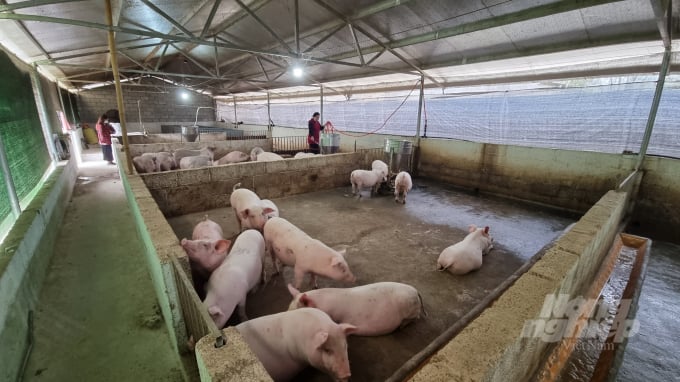
Pig raising model of Mrs. Nong Thi Ve's family, Huyen Du hamlet, Thanh Nhat town, Ha Lang district. Photo: Cong Hai.
Breeders have not been paid enough attention by the farmers, so most of them choose low-yield cattle and poultry breeds. They usually re-herd with varieties purchased from markets, trading points or those that traders collect from many places. The varieties are unknown origin, easy to spread disease.
Nong Thi Ve, Huyen Du hamlet, Thanh Nhat town, Ha Lang district said that she had been raising pigs for more than 20 years. She raised 10-30 pigs at the same time.
In 2020, she bought more land and built more than 300 m2 of barns to raise pigs and sows.
My family currently raises 6 sows, more than 60 meat pigs. From 2021, pork prices are precarious. Currently, the price of live pigs is only about VND45,000 - 50,000 per kg. The increasing price of feed causes difficulties for livestock farmers.
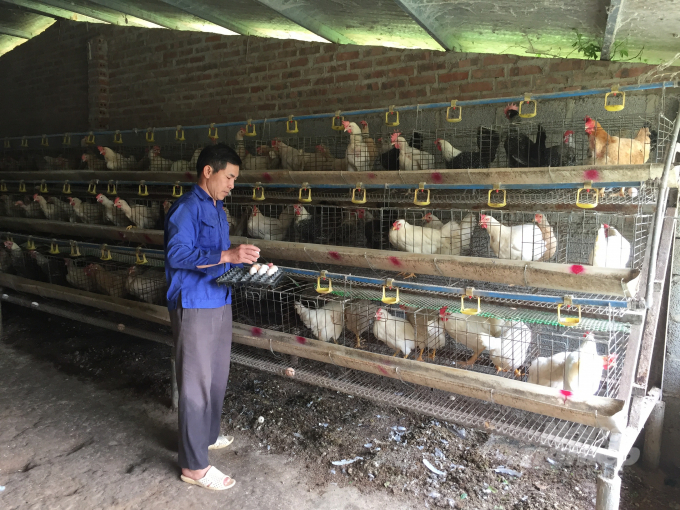
Integrated breeding model brings high economic efficiency of Bao Hung Agriculture - Livestock Cooperative, Truong Ha commune, Ha Quang district. Photo: Cong Hai.
Bao Hung Agricultural - Livestock Cooperative, Truong Ha Commune, Ha Quang District is one of the units that has affirmed its brand in the domestic and foreign markets thanks to the right direction. Currently, the cooperative has nearly 3,000 hens of all kinds (each day gives about 700 eggs), 40 sows, and porkers.
Director of the cooperative Le Bao Hung said that the cooperative received more than VND500 million from the State’s support to build infrastructure items. The co-operative regularly participated in training classes to improve production and business capacity.
“The State's support policies for cooperatives are very practical, creating conditions for cooperatives to develop,” he said, adding that the cooperative would continue to invest in raising more chickens and pigs to expand production activities.
With many synchronous solutions, Cao Bang livestock industry gradually recovered. In 2021, it had more than 102,000 buffaloes, an increase of 1.4 per cent compared to the end of 2020. A total of 9,390 pigs were supplied to market with live hog reaching more than 2,200 tonnes.
The province had more than 107,000 cows, of tham 10,728 sold out. Out of more than 300,000 pigs, 337,053 ones were sold, up 3.5 per cent over the same period in 2020. Poultry flocks were nearly 3 million heads. Livestock value in 2021 is estimated at more than VND1.261 trillion.
Cao Bang province strives for the proportion of the livestock industry in the structure of the agricultural sector to reach over 35 per cent by 2025, and 38 per cent by 2030. The total herd of livestock by 2025 will be nearly 110,000 buffaloes, 120,000 cows, nearly 370,000 pigs, and more than 3 million poultry. Total production of live meat of all kinds reached 43,600 tonnes.

Many households in Hoa An district develop a model of cattle fattening. Photo: Cong Hai.
Nguyen Thai Ha, Director of Cao Bang Department of Agriculture and Rural Development, said that to develop the livestock industry, it was necessary to improve the quality of breeding and expand the breeding facilities in association with the selection and multiplication of the herd, and to actively produce high-yield and high-quality breeders.
The province targeted promote the application of science and technology in the development of breeding sources, such as artificial insemination, storage and protection of genetic resources; well organise the selection and management of breeding pigs at parental level; qualified cows to produce commercial breeds for production. For households that have the initiative to breed, it is necessary to focus on investing in building barns and developing animal husbandry by biological methods, with periodic vaccinations.
To avoid price pressure, the province would further link production with product consumption, helping to improve the benefits of value chain participants, especially farmers. Farmers need to learn the market themselves, reduce production costs; associate into production complexes to actively find partners, sign product consumption contracts with trading and food processing enterprises to ensure sustainable output.
Translated by Hien Anh
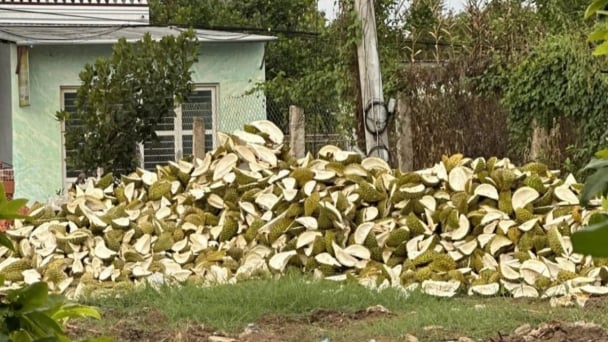
(VAN) The waste of resources from agricultural by-products and the situation of counterfeit and poor quality goods in production causing losses of thousands of billions were pointed out by the National Assembly deputy.
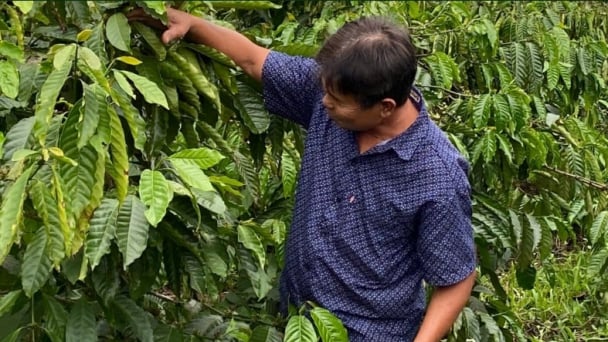
(VAN) After 5 years of implementation, the CAI initiative has helped coffee growers change their farming practices, moving toward responsible agriculture that meets global export standards.
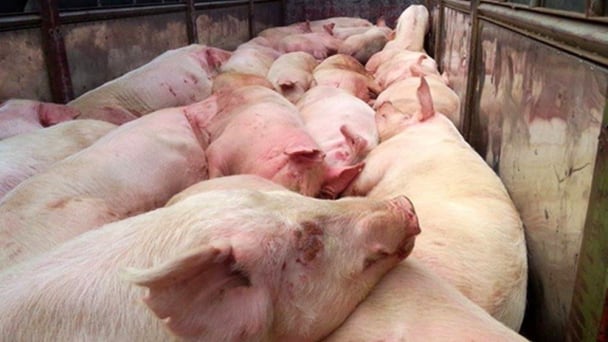
(VAN) The primary prerequisite for the comprehensive and robust integration of Vietnam's livestock sector into the global value chain is the establishment of a disease control system.
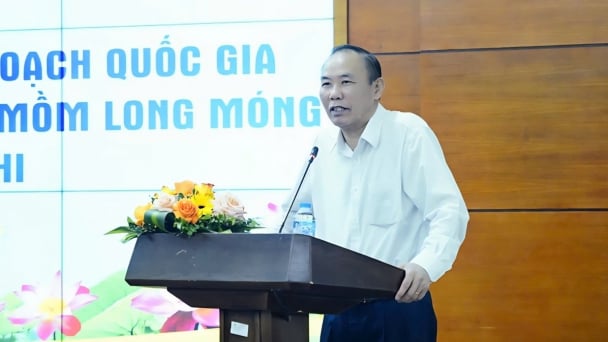
(VAN) The results of national programs are essential for establishing a contemporary livestock sector that is well-equipped to meet the demands of both domestic and international markets, with robust biosafety standards.
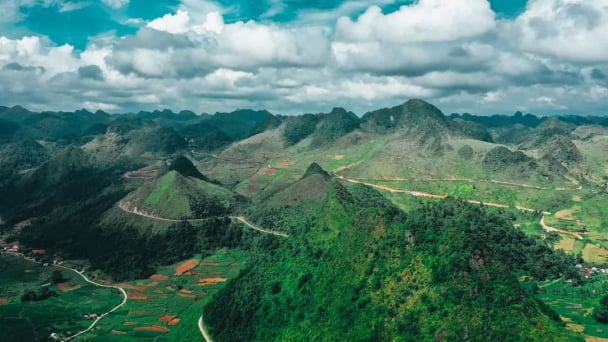
(VAN) The UNESCO Global Geopark revalidation of Non nuoc Cao Bang and the transition to a two-tier administrative model are presently undergoing a pivotal moment in Cao Bang, the northernmost province of Vietnam.
/2025/06/13/5330-2-004539_953.jpg)
(VAN) Changing policy mindset and removing investment barriers are urgent requirements to open up new development space for enterprises in the agricultural sector.

(VAN) The areas include the restoration of five million hectares of marine ecosystems.